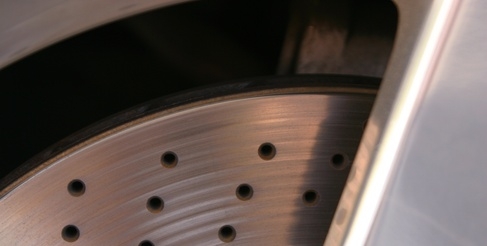
There are two major types of brake pads: ceramic and semi-metallic. Generally speaking, ceramic brake pads offer better performance because they are quieter and cause less heat from friction. However, they cost twice as much as semi-metallic pads. Ceramic pads also produce less brake dust. If you are trying to figure out if a pad is ceramic or semi-metallic, there are a few ways to go. It will depend on what you have at your disposal and if the pads are still in the box or on your car already.
Locate the brake pad box or literature and study the box for notation about the brake pads composition. This should be listed on the front near the bottom or on the back. Ceramic pads will say "Ceramic" or "Premium Ceramic" while semi-metallic pads will say "semi-metallic". The literature should list the components used in the pad as well. If the pad contains any copper, brass or other soft metals it is a semi-metallic pad.
Inspect the wheel wells of the car if you are trying to determine whether pads already installed are ceramic or semi-metallic. Semi-metallic pads produce more dust and the dust is a darker color. This will be prevalent around the front wheels only. If the brake dust is lighter in color and there is less of it, the pads may be ceramic.
Inspect the brake pads visually. Though it is difficult to tell a ceramic from semi-metallic by sight, you may be able to identify characteristics that give a semi-metallic pad away. They have a grainy, grayish color closer to the color of ground steel. Ceramic pads are lighter in color, closer to the color of tan clay.
Check the price. Compare the prices of the two pads, if available. Ceramic pads will cost up to twice as much as a semi-metallic pad. In 2010, ceramic pads ranged from $50-$75 and semi-metallic pads ran in the $30 range.